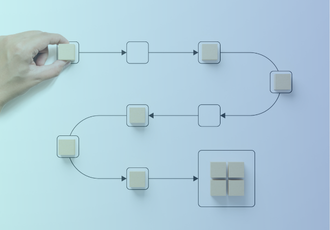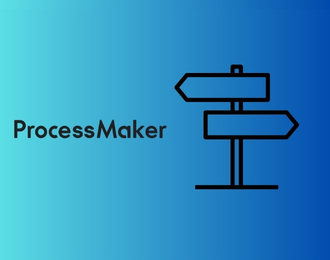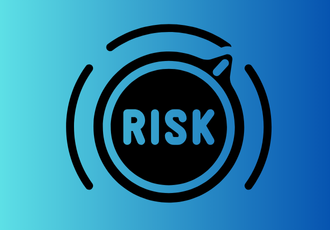What is Onboarding Automation?
Onboarding automation is a streamlining process of integrating new employees or clients into an organization using automated workflows and tools. It eliminates manual tasks, ensuring a smooth, efficient, and consistent experience.
For example, an automated onboarding process might include sending pre-scheduled welcome emails, assigning training modules, and setting up IT accounts for a new hire. Without onboarding automation, processes can become fragmented, with delays in paperwork, missed steps, or inconsistent communication. This leads to frustration, reduced productivity, and a poor first impression, making it harder for new hires or clients to integrate effectively into the organization.
Key Aspects of Onboarding Automation
Effective onboarding automation goes beyond just digitizing paperwork—it’s about building a structured, intelligent workflow that ensures speed, accuracy, compliance, and a smooth experience for the person being onboarded. Here are the key aspects that define a successful onboarding automation setup:
-
Digital Data Collection
Automated onboarding starts with digital forms that gather essential information such as personal details, tax information, payment preferences, and ID verification. These forms often come with built-in validation rules to reduce errors and ensure data accuracy from the beginning. -
E-Signature Integration
One of the most crucial components is the ability to send, track, and securely sign contracts, NDAs, compliance documents, or policy acknowledgements. E-signature tools streamline approvals and eliminate the delays of paper-based processes. -
Workflow Customization and Automation Rules
A flexible automation platform allows you to create tailored onboarding flows based on role, geography, team, or customer type. Logic-based triggers can auto-assign tasks, notify internal stakeholders, and move the process forward without manual intervention. -
Compliance Management
Automation ensures no step is skipped when it comes to collecting required documents or completing legal and regulatory checks. Time-stamped audit trails, document expiration tracking, and compliance checklists help organizations stay audit-ready at all times. -
Automated Communication and Notifications
Personalized welcome messages, progress updates, reminders, and task assignments can be scheduled and sent automatically through email, SMS, or in-app notifications. This ensures that everyone involved stays informed and engaged throughout the process. -
System Integrations
A robust onboarding automation tool integrates with HR systems, CRMs, payroll platforms, identity verification services, and IT provisioning tools. These integrations ensure seamless data flow and eliminate duplicate work across systems. -
Progress Tracking and Analytics
Dashboards and reports provide visibility into onboarding status, task completion, bottlenecks, and overall performance metrics. This enables managers and HR/ops teams to intervene quickly and continuously optimize the process.
Benefits of Automated Onboarding
-
Faster and More Efficient Registration – Automated onboarding eliminates manual paperwork, reducing processing time and ensuring patient information is collected accurately. Patients can complete registration forms online, allowing staff to focus on care instead of administrative tasks.
-
Reduced No-Shows and Appointment Cancellations – Automated reminders via SMS and email help patients stay informed about upcoming appointments, reducing missed visits and last-minute cancellations. This improves scheduling efficiency and optimizes provider availability.
-
Improved Data Accuracy and Compliance – Digital onboarding minimizes human errors in patient records, ensuring that healthcare providers have reliable information. Additionally, automation helps maintain compliance with HIPAA and other regulatory requirements by securely handling sensitive patient data.
-
Enhanced Patient Experience – A seamless and user-friendly onboarding process improves patient satisfaction. Features like online scheduling, digital consent forms, and pre-visit instructions create a stress-free experience, making patients feel more engaged and informed.
-
Streamlined Insurance and Billing Processes – Automated verification of insurance details and billing information ensures faster approvals and fewer claim denials. This reduces financial disputes and enhances the efficiency of revenue cycle management for healthcare providers.
-
Optimized Staff Productivity – By automating repetitive tasks such as document collection, data entry, and appointment confirmations, staff can dedicate more time to patient care. This improves overall workflow efficiency and reduces administrative burden.
Automating patient onboarding leads to a smoother, more efficient process that benefits both healthcare providers and patients, ensuring better care delivery and operational success.
Examples of Onboarding Automation in 2026
With digital transformation reshaping global operations, onboarding automation has matured into a strategic lever across various functions. Here are real-world examples of how organizations are automating onboarding processes in 2026 to save time, reduce errors, and enhance experience:
-
Supplier Onboarding Portals with Automated KYC & Compliance
Companies are using supplier onboarding portals integrated with KYC tools to automatically validate tax IDs, company registrations, and compliance documents. These platforms trigger reminders for missing paperwork and auto-sync approved vendor profiles with ERP systems.
-
Employee Onboarding with Preconfigured HR Workflows
HR teams now deploy automated onboarding workflows that send offer letters, collect e-signatures, trigger IT provisioning, assign onboarding tasks, and provide digital training modules—reducing onboarding time from days to hours.
-
Healthcare Patient Onboarding via Digital Intake Platforms
Clinics and hospitals are using patient onboarding automation tools to digitize medical history intake, insurance validation, and appointment scheduling. Automated reminders and real-time data sync with EHRs eliminate redundant paperwork and improve care coordination.
-
Contractor Onboarding via Self-Service Portals
Freelancers and gig workers are onboarded through self-service portals where they upload documents, complete compliance checks, and receive onboarding instructions automatically. These tools ensure readiness within hours while maintaining audit trails.
-
Financial Services Client Onboarding with AML Checks
Banks and fintechs use onboarding systems that automate anti-money laundering (AML) screenings, identity verification (via eKYC), and risk scoring. Clients can complete onboarding remotely with real-time approvals, accelerating account activation and compliance assurance.
-
Insurance Agent or Broker Onboarding
Insurers are automating agent onboarding with digital contracting workflows, license verification APIs, and e-learning modules. Agents get certified and equipped faster, leading to quicker policy sales and improved productivity.
8 Steps to Automate the Onboarding Process
Onboarding new employees or clients can often be a time-consuming and error-prone process, especially when relying on manual methods. But with automation, businesses can streamline this process, making it more efficient and consistent.
FlowForma Copilot offers an intuitive, no-code solution to help you automate onboarding workflows with ease.
In this guide, we’ll show you how FlowForma Copilot can quickly build your onboarding process, refine it with simple logic, and ensure it’s running smoothly—all within minutes. Say goodbye to complex setups and hello to a seamless onboarding experience!
-
Let FlowForma Copilot handle the hard work by building your onboarding process in seconds.
-
Upload a diagram or directly request a new onboarding process from Copilot.
-
Review the suggested steps and questions provided by FlowForma Copilot.
-
Refine your onboarding process, then proceed by clicking Build.
-
Implement business and workflow logic easily in our no-code interface.
-
Utilize simple logic to ensure your process runs smoothly and efficiently.
-
Test your form to ensure the business rules are functioning correctly. Quickly adjust the process to meet your specific business needs.
Conclusion
Onboarding automation simplifies the process of integrating new employees or clients by leveraging automated workflows and tools. This approach eliminates manual tasks, ensuring a seamless and consistent experience.
Without automation, onboarding can become inefficient, leading to delays, missed steps, and poor first impressions. By using tools like FlowForma, businesses can easily design, refine, and implement an automated onboarding process that ensures smooth operations and better productivity.
After reading this article, evaluate your current onboarding process and identify areas where automation can make a difference. Map out the steps you want to automate and choose a tool that supports your specific needs.
Remember, a well-implemented onboarding automation system not only saves time but also enhances the experience for new hires and clients, setting the tone for long-term success.
FlowForma's no-code platform empowers you to create and automate onboarding processes with ease.
Streamline your workflows, save time, and improve efficiency—Book a demo today and start automating your onboarding process!
.png) By
By 



